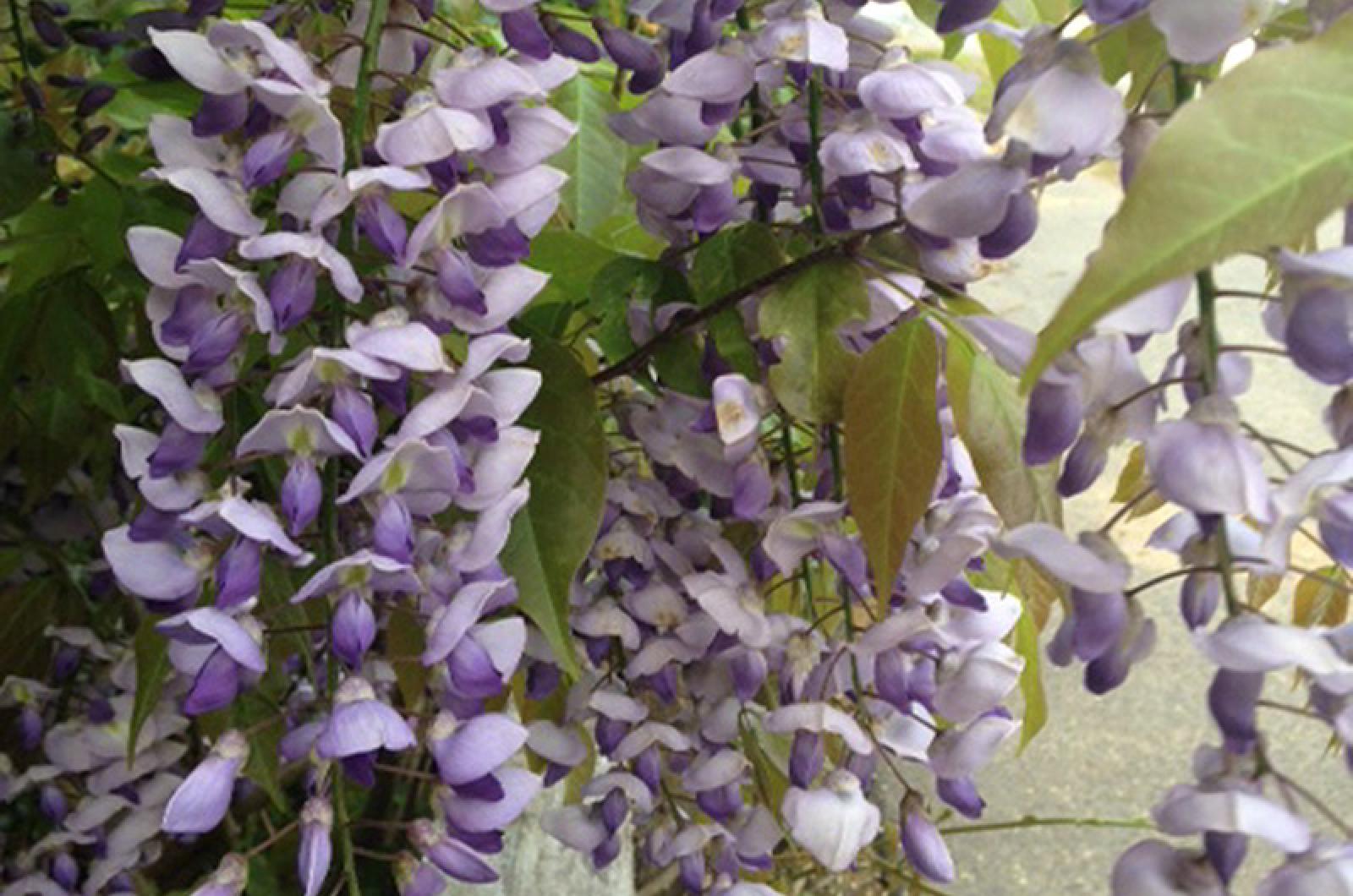Wisteria is no shrinking violet. This voracious vine is not lacking in size, scent or celebrity.
It is the season for wisteria hysteria. The madness can be a celebration of smell and beauty or complaint of squeezing and suffocation.
Love it or hate it, wisteria packs a white, pink or purple floral punch. Its blossoms, which some claim are edible, have reportedly been used to make wine, and eaten raw or cooked. Others disagree strongly, saying the entire plant is toxic, especially its seeds. One source notes that just two raw seeds can kill a child. This plant is also toxic to pets and livestock.
Both its sight and scent are memorable. Japanese novelist Murasaki Shikibu appreciated its timing and fragrance: “And then just when your regrets are the strongest the wisteria comes into bloom, and it blooms on into the summer. There is nothing quite like it. Even the color is somehow companionable and inviting.”
And more direct was Japanese poet Yosa Buson, who was simple in his praise: “In pale moonlight/the wisterias scent/comes from far away.”
Wisteria’s size can also be significant. Vines have been known to reach 65 feet high and 32 feet wide. The largest wisteria plant hails from California and was planted n 1894. It measures more than an acre, weighs over 250 tons, and boasts 1.5 million blossoms. Not to be outdone, consider the Great Miracle Wisteria in Tochigi, Japan, which is about 140 years old and is perhaps the oldest wisteria still standing. Or even more impressive might be the wisteria tunnel in Japan’s Kawachi Fuji Gardens that boasts 330 feet of wisteria from 150 plants of 20 different species.
You would never say that wisteria is all vine and no taters. The vine itself can kill. Wisteria grows voraciously and is able to increase 10 feet or more in one year. Its behavior includes twining and strangling other plants. In some places, some species are considered invasive, though wisteria is not currently on the Massachusetts “do not plant” list. One non-climbing variety is able to form dense thickets and prevent the growth of other plants.
American and Kentucky wisteria are the only two of the 10 species in the genus that are native to the United States. The natives have shorter, denser flower clusters, flower stalks less than one centimeter, and hairless pods and can be an important larval host for some butterflies and moths. The foreigners, noted by their longer flower clusters and stalks, and dense, hairy pods, arrived from Asia, were widely planted nationwide, and often escaped cultivation. Adding to wisteria’s duality is its name, which can also be spelled wysteria or wistaria.
Sometimes, though, wisteria can disappoint its admirers. It is long-lived and can take up to twenty years for a first bloom. If you have a wonky wisteria that refuses to flower, try these tips: add triple phosphate fertilizer, or, if in a violent (or violet) rage, you can slice or cut into its roots to push the plant into bloom.
If you successfully force the flowers, you’ll have a thing of beauty and perhaps a joy forever, because whether you want it or not, wisteria shows no tendency to wither on the vine.
Suzan Bellincampi is director of the Felix Neck Wildlife Sanctuary in Edgartown, and author of Martha’s Vineyard: A Field Guide to Island Nature.




Comments
Comment policy »